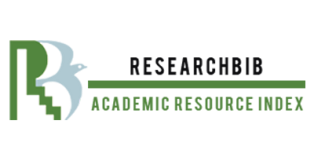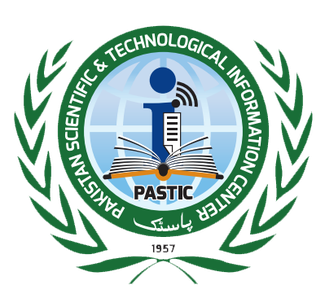Data Mining for Smarter Administration of TVET Institutes
Keywords:
TVET Education, Data-Mining, Smart AdministrationAbstract
Retaining the trainees is a major problem for the TVET institutes today. The trend of TVET education in Khyber Pakhtunkhwa province has improved in recent decades. Despite its high cultural barriers, resistance in women's education, and dropout rates, on the basis of annual admission, Khyber Pakhtunkhwa holds the 2nd position among all other provinces of Pakistan. In this research, we have tried to decrease the dropout ratio by enhancing the Daily attendance of the trainees and improving their results. Monthly Fee slip, Date Sheet, and Results will be shared with the parents/guardians through SMS/WhatsApp. New TVET institutes will be able to check the trainee's educational record from the previous TVET institute. The Data Mining for Smarter Administration of TVET Institutes will be a Mobile and Web-Based Application and will keep a close relationship between Parents, Teachers, and Administration of the TVET institute.
References
N. D. N. and W. Z. W. H. W F Wan Yaacob, N Mohd Sobri, S A Md Nasir, W F Wan Yaacob, “Predicting Student Drop-Out in Higher Institution Using Data Mining Techniques,” J. Phys. Conf. Ser., vol. 1496, 2020, doi: 10.1088/1742-6596/1496/1/012005.
S. L. Yi Peng, Yong Zhang, Yu Tang, “An incident information management framework based on data integration, data mining, and multi-criteria decision making,” Decis. Support Syst., vol. 51, no. 2, pp. 316–327, 2011, doi: https://doi.org/10.1016/j.dss.2010.11.025.
A. L. Moses, Byaruhanga, “A Flexible Trainee Assessment System for Continuous Performance Monitoring,” Int. J. Technol. Manag., vol. 5, no. 2, pp. 1–22, 2020.
A. S. MohammadNoor Injadat, Abdallah Moubayed, Ali Bou Nassif, “Systematic ensemble model selection approach for educational data mining,” Knowledge-Based Syst., vol. 200, p. 105992, 2020, doi: https://doi.org/10.1016/j.knosys.2020.105992.
F. Yang and F. W. B. Li, “Study on student performance estimation, student progress analysis, and student potential prediction based on data mining,” Comput. Educ., vol. 123, pp. 97–108, Aug. 2018, doi: 10.1016/J.COMPEDU.2018.04.006.
W. Q. Syed A. Raza, “Social Isolation and Acceptance of the Learning Management System (LMS) in the time of COVID-19 Pandemic: An Expansion of the UTAUT Model,” J. Educ. Comput. Res., vol. 59, no. 2, 2021, doi: https://doi.org/10.1177/0735633120960421.
M. Y. O. Delima, Allemar Jhone P.Arroyo, Jan Carlo T.Elape, Michelle C., “The Use of Schoology as Learning Management System in the College of Computing Education: A Response Assessment using Data Mining Techniques,” Int. J. Adv. Trends Comput. Sci. Eng., vol. 9, no. 3, 2020, doi: https://www.warse.org/IJATCSE/static/pdf/file/ijatcse169932020.pdf.
Muhammad Anwar Shahid, Akmal Rehan, Salman Afsar Awan, Ahmed Mateen, Raim Odenaev, “Improving Education With Enhanced Machine Learning Technique for Android Applications,” Int. J. Adv. Res. Eng. Technol., vol. 11, no. 9, pp. 582–590, 2020, [Online]. Available: https://papers.ssrn.com/sol3/papers.cfm?abstract_id=3712873
B. Wibawa, J. S. Siregar, D. A. Asrorie, and H. Syakdiyah, “Learning analytic and educational data mining for learning science and technology,” AIP Conf. Proc., vol. 2331, no. 1, Apr. 2021, doi: 10.1063/5.0041844.
T. O. Phauk Sokkhey, “Developing Web-based Support Systems for Predicting Poor-performing Students using Educational Data Mining Techniques,” Int. J. Adv. Comput. Sci. Appl., vol. 11, no. 7, 2020, doi: 10.14569/IJACSA.2020.0110704.
Ginika Mahajan, Bhavna Saini, “Educational Data Mining: A state-of-the-art survey on tools and techniques used in EDM,” Int. J. Comput. Appl. Inf. Technol., vol. 12, no. 1, 2020, [Online]. Available: https://www.researchgate.net/publication/340983783_Educational_Data_Mining_A_state-of-the-art_survey_on_tools_and_techniques_used_in_EDM
H. Li, “Application of Classification Mining Technology Based on Decision Tree in Student Resource Management,” Lect. Notes Inst. Comput. Sci. Soc. Telecommun. Eng. LNICST, vol. 465 LNICST, pp. 149–160, 2023, doi: 10.1007/978-3-031-23950-2_17/COVER.
A. U. K. and Harwati, “A Comparative Study to Predict Student’s Performance Using Educational Data Mining Techniques,” IOP Conf. Ser. Mater. Sci. Eng., vol. 215, 2017, doi: 10.1088/1757-899X/215/1/012036.
Á. S. Erika B. Varga, “Detecting at-risk students on Computer Science bachelor programs based on pre-enrollment characteristics,” Hungarian Educ. Res. J., 2021, doi: https://doi.org/10.1556/063.2021.00017.
G Dhanush, Dr KG Mohan, “INTEGRATED ADAPTABLE MOBILE BASED PLATFORM FOR UNIVERSITY/COLLEGE MANAGEMENT USING FIREBASE,” Int. J. Eng. Appl. Sci. Technol., vol. 5, no. 1, pp. 373–378, 2020, [Online]. Available: https://www.ijeast.com/papers/373-378,Tesma501,IJEAST.pdf
R. N. TANGIRI, I. ADAMU, and F. KÖPRÜLÜ, “CONTENT ANALYSIS ON SCHOOL MANAGEMENT AND ACADEMIC PERFORMANCE,” Near East Univ. Online J. Educ., vol. 3, no. 2, pp. 42–52, Sep. 2020, doi: 10.32955/NEUJE.V3I2.246.
Farah Nadeem, Muhammad Muzaffar Iqbal, “Annual School Census Report 2020-2021,” ResearchGate, 2021, doi: 10.13140/RG.2.2.31015.27043.

Downloads
Published
How to Cite
Issue
Section
License
Copyright (c) 2025 50sea

This work is licensed under a Creative Commons Attribution 4.0 International License.




















